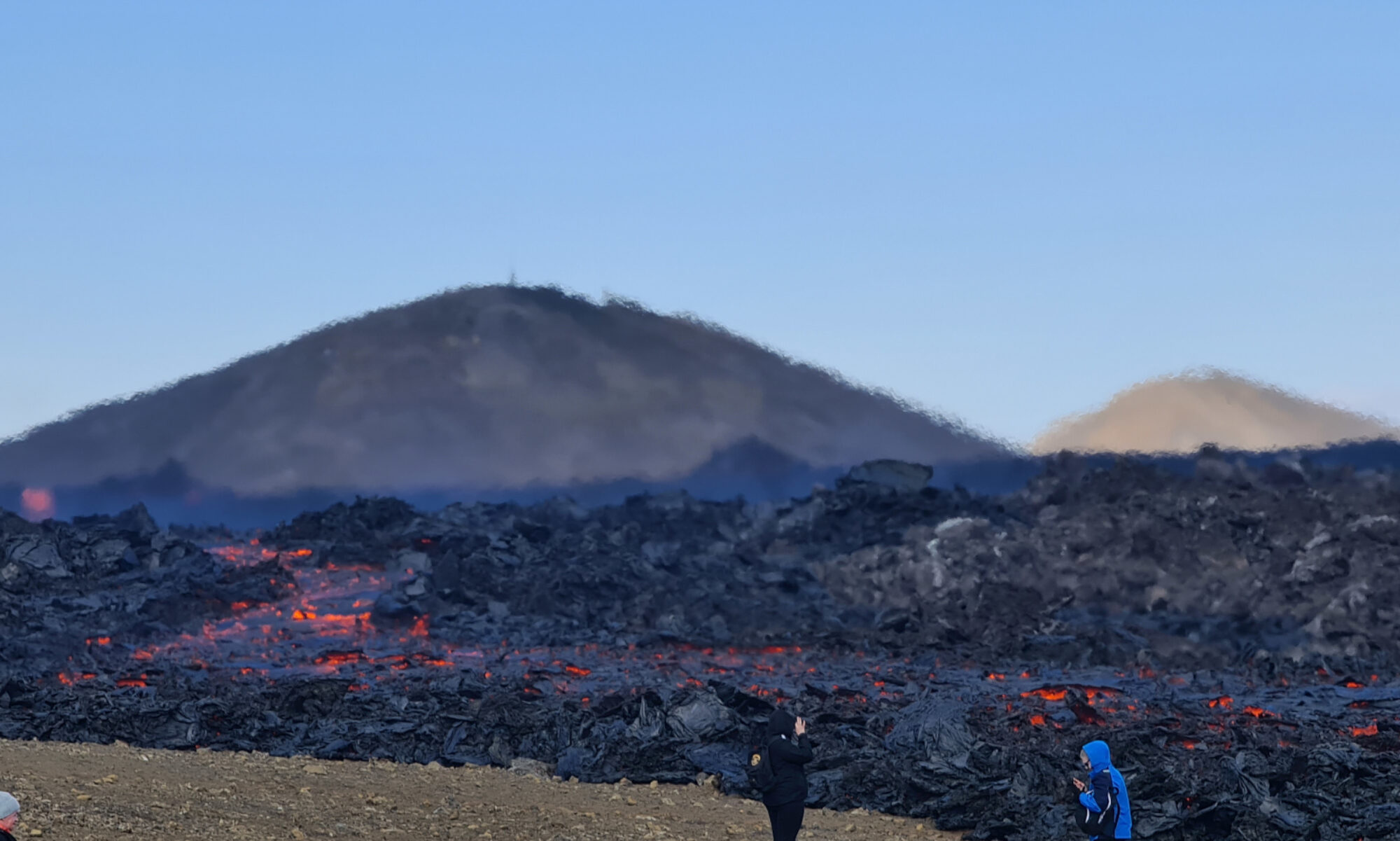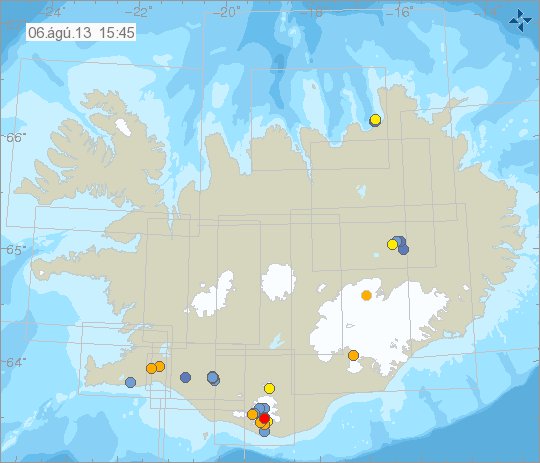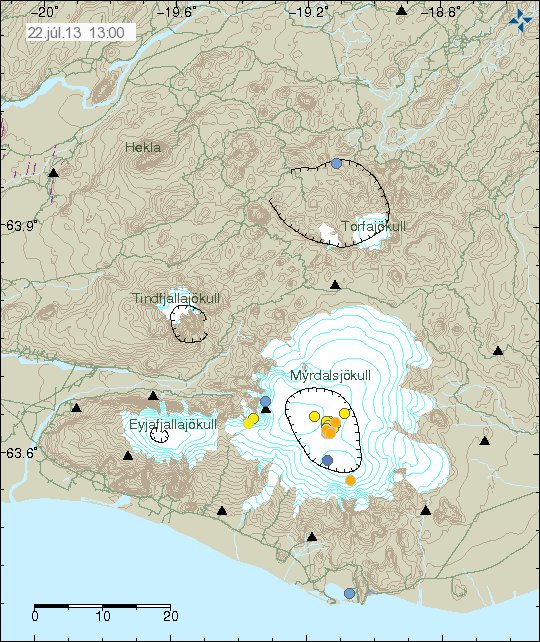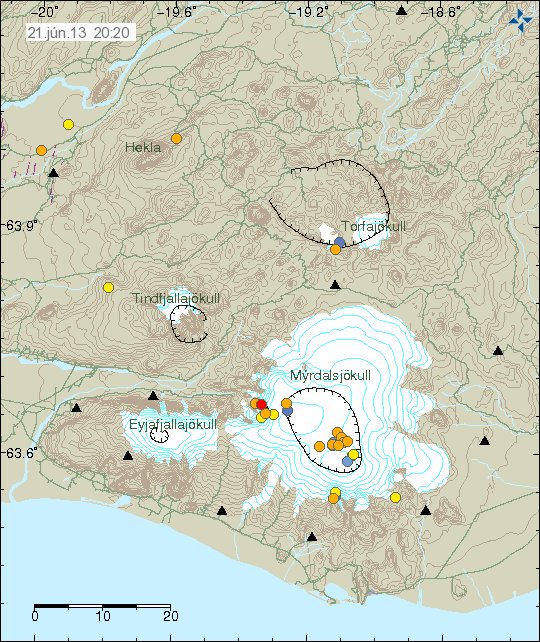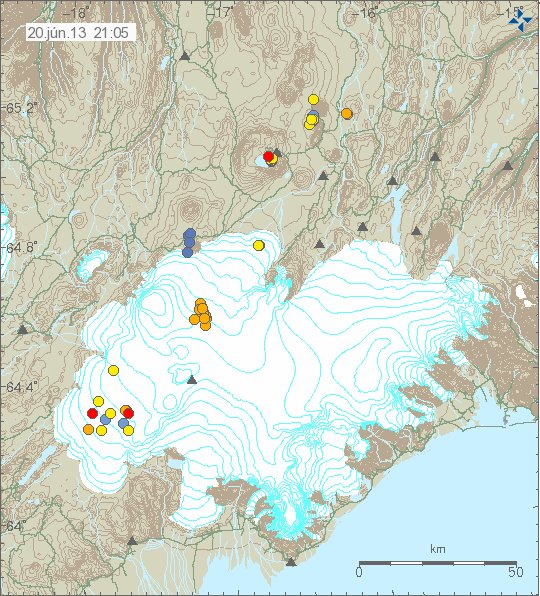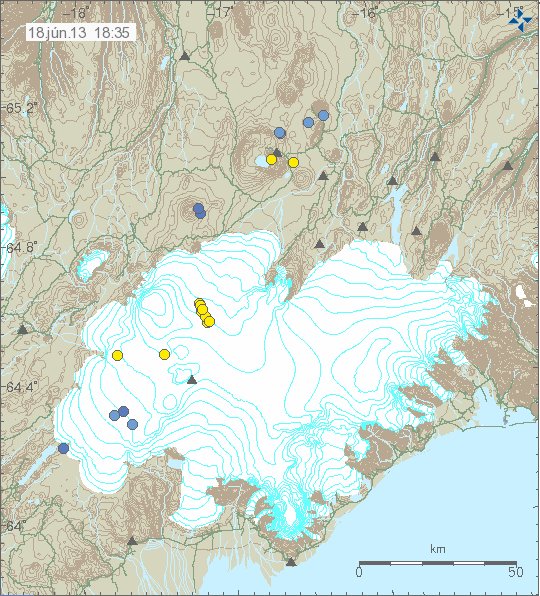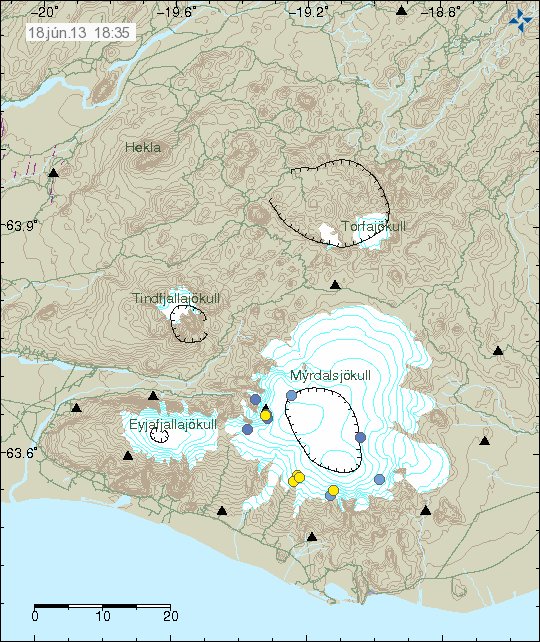During the night of 16-August-2013 several steam explosions took place in Kverkfjöll volcano. This steam explosions were a result of glacier flood that took place few hours earlier, since under the glacier lake in question are hydrothermal areas (hot spring). This hot springs are so hot they do not emit hot water, they emit steam and that means they are warmer than 150 Centigrade. When under pressure this water has higher boiling point. When a glacier flood happens there is a change in pressure, the boiling point of the hot water moves down, this super heats the water and a pressure explosion takes place.
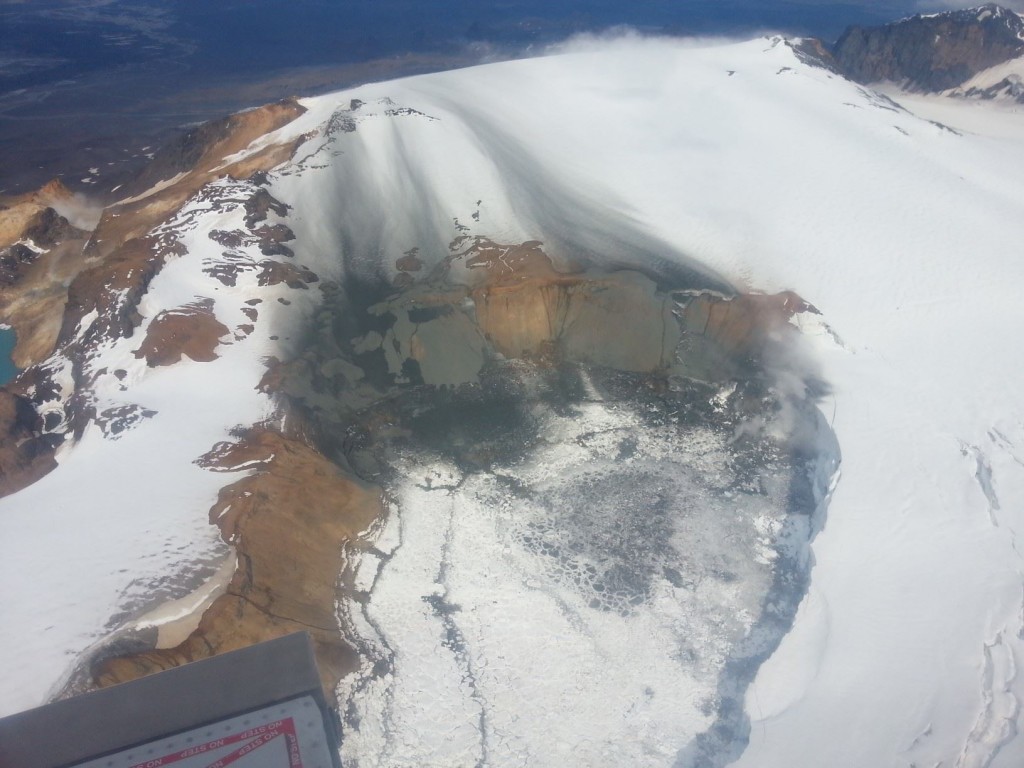
Effects of steam explosion in Kverkfjöll volcano on 16-August-2013. Copyright of this image belongs to Almannavarnir (Civil protection in Iceland). Picture is from Facebook.
I do not know if there has been any change in hydrothermal activity in Kverkfjöll volcano over the past few years. This volcano is remote and it is not easy to go there, even during the summer time. It has been advised for tourist to be careful around Kverkfjöll volcano due to this changes that are taking place there now. Hot springs and other hydrothermal features are always dangerous to get close to.
More information on Hydrothermal explosions and superheated water
Hydrothermal explosion (Wikipedia)
Superheating (Wikipedia)
Blog post updated at 15:04 UTC on 17-August-2013.
Blog post updated at 15:08 UTC on 17-August-2013.
